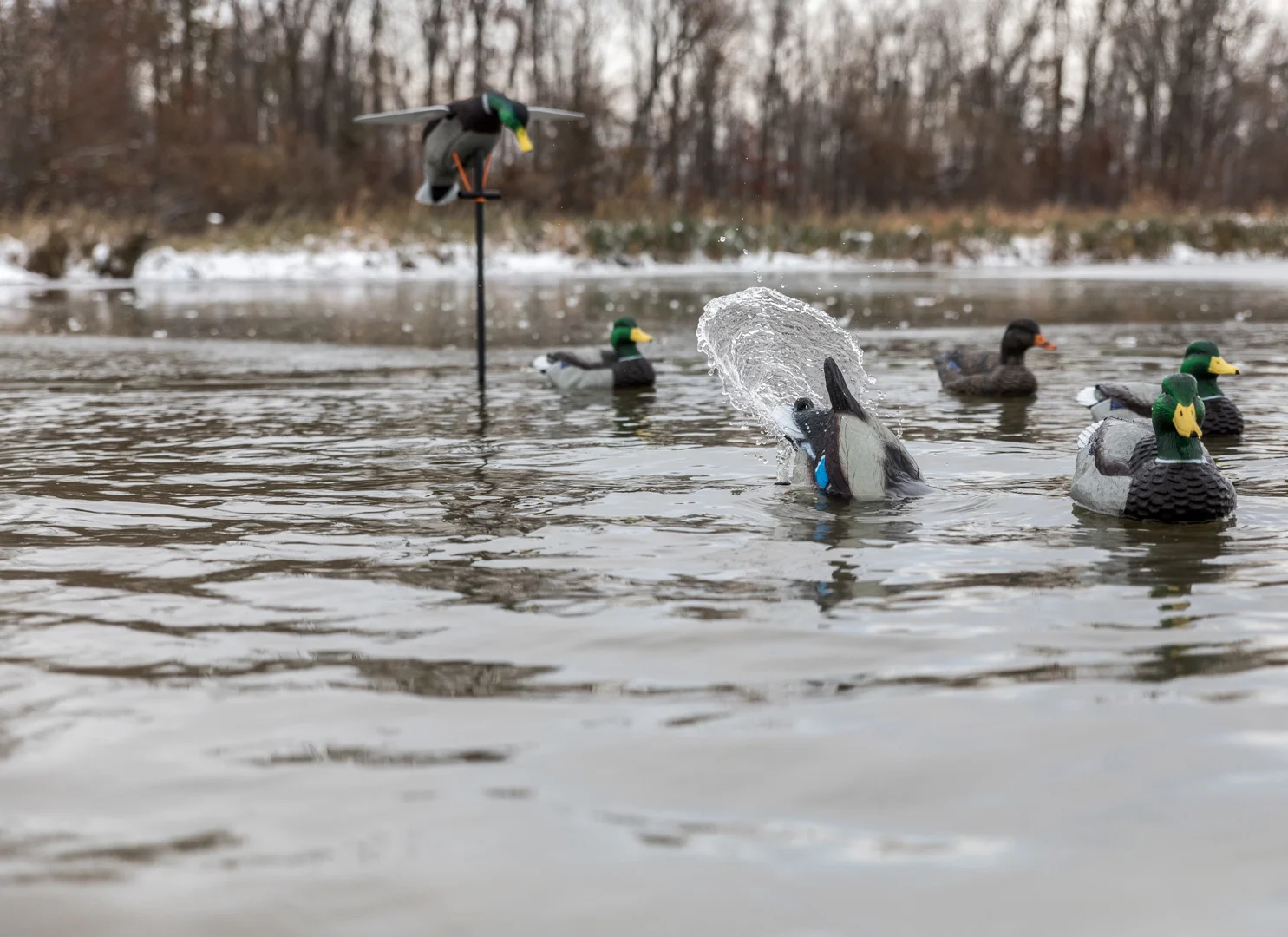It's no secret that adding motion to a decoy spread is the best way to increase realism. Stagnant water can flare birds far out of shotgun range. Traditionally, hunters solved this issue with jerk cords, helping to create ripples throughout a spread. This reliable tactic is as effective as it was 50 years ago. However, waterfowlers now have spinners, swimmers, ripplers, flappers, and tippers to bring even more motion and realism to a duck hole. But what's the best way to use these motorized decoys?
As helpful as spinners and other motion decoys can be, they can also hurt a setup under the wrong conditions. And since spinners have become so popular, ducks now see flashing wings from September to January. That's why hunters must have their spinners, ripplers, and swimmers set in the right areas at the right times. Here are six tips for when and when not to use motion decoys.

1. Place Spinners Upwind of the Hole
According to Terry Denmon, founder of MOJO, “Spinning wing decoys were always intended to be a long-range attractor. They reflect a strobe of UV light that ducks can see from miles away.” That long-range attraction is crucial for hunters, but ducks don’t always like finishing right on top of them. Mallards and other puddle ducks will notice the flash from a long distance and focus on finding a spot to land as they approach. Place spinners upwind of your landing hole so they still flash for distance, but ducks can land before they have to fly over the strobe.
2. Reduce Wing Glare on Cloudy Days
The hard flash from spinners can be overpowering on cloudy days. Hunters can still benefit from the long-range attraction of spinners under these conditions, but they should tone down the strobe. A light dusting of gray spray paint can reduce flash, but the effect is permanent. Denmon suggests covering their original wings with black pantyhose for a more temporary solution. Alternatively, MOJO makes a muted wing specifically for cloudy days for hunters who want a plug-and-play option.
3. Finish Ducks with Water Motion
Water motion is crucial for realism. Live birds are never stagnant, and hunters should simulate that natural movement in their decoy spread. An old-fashioned jerk cord is a hunter’s best friend for mass-producing ripples. The Designated Puller by Perfect Limit Outdoors automates this process on a battery-powered rig. Placing swimmers and splashers—like Higdon’s Pulsator and Crazy Kicker—in and around the landing hole complements broadly distributed ripples and gives ducks a convincing focal point. Run automatic or manual jerk cords on the fringes and splashers, swimmers, and wobblers closer to the landing hole.

4. Be Aggressive in the Early Season
While spinning wing decoys weren’t intended to finish ducks, they can still draw birds in like a tractor beam. Early in the season, place spinners directly in the landing hole to simulate landing ducks. This strategy has proven especially effective on divers and teal, but should be altered later in the season. It doesn’t take long before warier species, like mallards and pintails, quickly associate spinners with danger. Once ducks become hesitant to commit fully, consider moving them away from your landing hole.
5. Readjust During Late Season
Once the shooting starts, all bets are off. Ducks shift into survival mode. Bright, flashing, spinning wing decoys can become a warning sign. “Remember, long-range attraction is still important late in the season,” Denmon says. “If you think your spinners are spooking ducks up close, move them to the far upwind edge of your spread. You can even move them 100 yards outside of your spread. Hunters should also utilize remote controls later in the season and turn off their spinners when ducks come close.”

6. Pull the Spinners for Geese
Geese typically don’t like spinning wing duck decoys. If you hunt ducks and geese together, always carry a remote control and turn off your duck spinners when honkers start flying your way. Hunters should attract geese with motion and calling. Power-flagging is still the tried-and-true long-range attractor. As geese approach, the spread should come alive with socks, wind decoys, bobbers, and flappers, like the Lucky Duck Super Goose. MOJO recently released Mini Flags to add additional motion to a spread.

